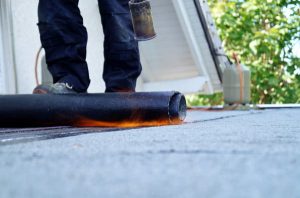Understanding the Lifespan of Waterproofing: How Many Years Does it Last?
Waterproofing is a crucial element in protecting structures from the damaging effects of water infiltration. Whether it’s a building foundation, a roof, or a basement, applying waterproofing measures can significantly extend the life of the structure. However, many people wonder, “How long does waterproofing actually last?” In this article, we’ll explore the factors influencing the lifespan of waterproofing and provide insights into making it more effective and durable.
The Role of Material Quality
One of the primary determinants of how long waterproofing lasts is the quality of the materials used. High-quality materials, such as advanced membranes and coatings, can provide lasting protection against water damage. These materials are designed to withstand various weather conditions and environmental factors, contributing to the longevity of the waterproofing solution.
Environmental Conditions and Exposure
The lifespan is closely tied to the environmental conditions to which it is exposed. Harsh climates with extreme temperature variations, heavy rainfall, or prolonged exposure to the sun can accelerate the deterioration of materials. In such conditions, regular maintenance and inspections become crucial to identify any signs of wear and tear and address them promptly.
Maintenance Practices
Regular maintenance is key to ensuring the effectiveness and longevity of systems. Periodic inspections can help identify any potential issues before they escalate. Cleaning gutters, removing debris, and addressing minor damages promptly can significantly extend the lifespan of waterproofing measures. Additionally, reapplying a protective coating or sealant as part of routine maintenance can enhance the durability of the solution.
Construction and Installation Quality
The quality of construction and installation plays a crucial role in determining how well measures will perform over time. Poorly executed installations or the use of substandard construction materials can compromise the effectiveness of waterproofing. It’s essential to hire experienced professionals and follow recommended installation practices to ensure the longevity of the system.
Building Movement and Settling
Buildings are subject to movement and settling over time. These natural processes can impact the integrity of waterproofing materials. Cracks may develop, and the structure may shift, potentially affecting the system. Incorporating flexible and elastic waterproofing materials can help accommodate these movements, reducing the likelihood of damage and enhancing the longevity of the solution.
Conclusion
In conclusion, the lifespan depends on various factors, including material quality, environmental conditions, maintenance practices, and the quality of construction and installation. While high-quality materials and proper installation contribute significantly to durability, regular maintenance is equally crucial. Building owners and managers should adopt a proactive approach to waterproofing, incorporating routine inspections and addressing issues promptly to ensure long-lasting protection against water damage.


